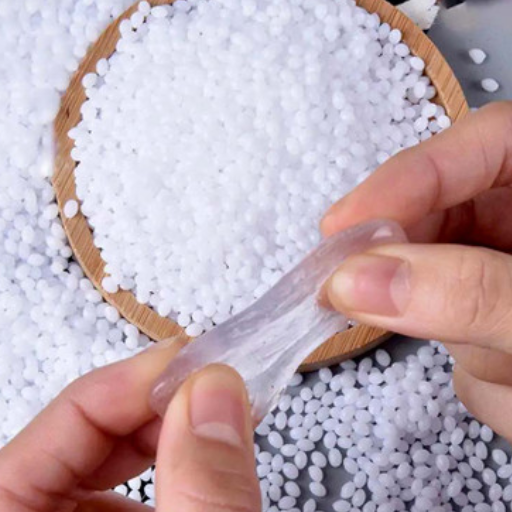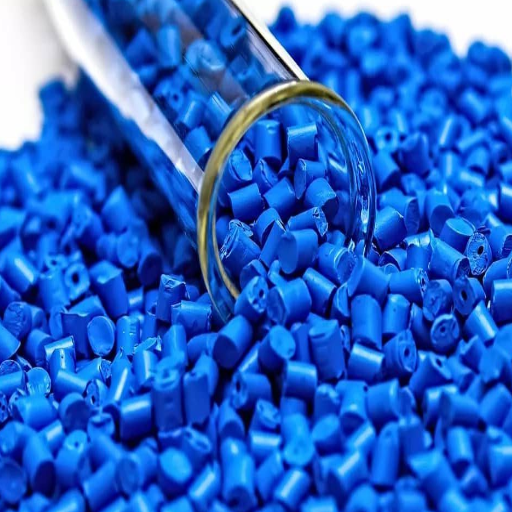Nylon polyamides, most notably PA6 and PA66, are among the most widely used engineering thermoplastics in manufacturing, thanks to their exceptional mechanical properties and versatility. While both materials share similar chemical structures, they exhibit distinct differences that make them uniquely suited to various industrial applications. This article explores the key characteristics of PA6 and PA66, highlighting their advantages, limitations, and specific use cases. By comparing their thermal performance, mechanical strength, and processing requirements, readers will understand how these two materials differ and how to select the most appropriate option for specific molding projects.
What are PA6 and PA66, and how do they differ?
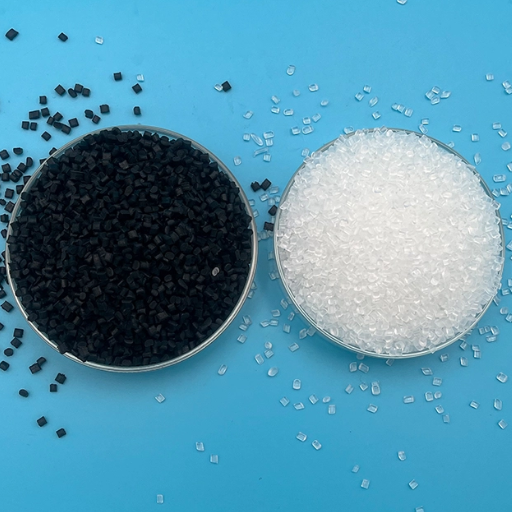
PA6 (Polyamide 6) and PA66 (Polyamide 66) are both members of the nylon family, distinguished by their polymer structures and overall performance characteristics. PA6 is synthesized through ring-opening polymerization of caprolactam, resulting in a material with excellent toughness, elasticity, and chemical resistance. On the other hand, PA66 is produced via condensation polymerization of hexamethylenediamine and adipic acid, which yields higher rigidity, superior thermal resistance, and more excellent wear performance compared to PA6.
The primary differences between the two lie in their mechanical and thermal properties. PA6 exhibits lower melting and processing temperatures, making it easier to mold and fabricate, while PA66’s higher crystallinity translates into superior dimensional stability and strength at elevated temperatures. These distinctions make PA6 better suited for applications requiring flexibility and ease of processing, while PA66 is preferred for heavy-duty parts that demand long-term durability and thermal performance.
Chemical structure of PA6 and PA66
Polyamide 6 (PA6) and 66 (PA66) share similarities in their fundamental polyamide composition, but significant differences arise from their molecular structures. PA6 is synthesized through the ring-opening polymerization of caprolactam, resulting in a repeating unit based on a single monomer with six carbon atoms. This linear structure contributes to its relatively lower melting point and increased ability to absorb moisture.
On the other hand, PA66 is formed through the condensation polymerization of adipic acid and hexamethylenediamine, which introduces alternating units that contain six carbon atoms each. This alternating structure enhances the polymer chain’s rigidity and inter-chain hydrogen bonding, resulting in higher crystallinity, more excellent thermal resistance, and improved mechanical properties. Both materials owe their performance characteristics to these structural differences, making them versatile for distinct applications in engineering and manufacturing.
Key properties of PA6 vs PA66
When comparing PA6 and PA66, several key differences influence their applications. PA6 has a lower melting point (approximately 220°C) than PA66 (around 260°C), making PA6 easier to process at lower temperatures. However, PA66 offers superior thermal and wear resistance, making it more suitable for high-temperature environments and demanding mechanical applications. PA6 exhibits better toughness and impact resistance because of its slightly lower crystallinity, while PA66 is generally stiffer and more rigid. Additionally, PA6 absorbs more moisture than PA66, affecting its dimensional stability and mechanical properties in humid conditions. These distinctions between PA6 and PA66 are critical to their specific use cases, particularly in automotive, electronics, and textiles.
Differences in melting point and temperature resistance
PA66 generally has a higher melting point, approximately 255°C, compared to PA6, which melts at around 220°C. This characteristic makes PA66 more suitable for applications involving higher continuous operating temperatures. Additionally, PA66 exhibits superior thermal aging resistance, maintaining mechanical integrity under prolonged heat exposure. Conversely, PA6, with its lower melting point, is still capable of performing effectively in moderate temperature environments but is less resistant to extreme heat over time. These distinctions are critical in selecting the appropriate material for demanding applications such as engine components, where thermal performance is a decisive factor.
How do the mechanical properties of PA6 and PA66 compare?
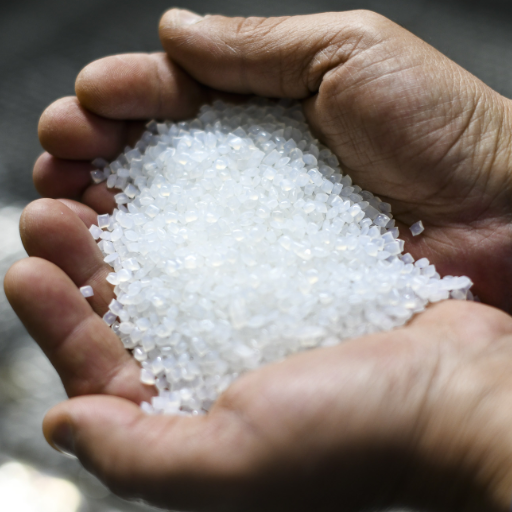
PA66 exhibits superior mechanical properties compared to PA6, particularly in terms of stiffness and tensile strength. This makes PA66 more suitable for high-stress applications requiring enhanced dimensional stability. PA6, while slightly less rigid, offers improved toughness and impact resistance, making it advantageous in applications where flexibility and shock absorption are required. Both materials demonstrate excellent wear resistance, but PA66 generally holds a slight edge in scenarios involving sustained mechanical loads.
Tensile strength and stiffness
When comparing tensile strength and stiffness, PA66 exhibits superior performance due to its higher crystalline structure, which provides enhanced rigidity and mechanical strength under stress. It is highly suited for applications involving high loads or requiring stability under thermal or mechanical stress. On the other hand, PA6 offers a lower tensile modulus but compensates with better elasticity and impact strength, making it ideal for conditions requiring flexibility and resistance to sudden forces. While both materials display strong wear resistance, PA66’s higher stiffness makes it the preferred choice for components like gears, bearings, and reinforcement fibers in structural designs.
Impact resistance and toughness
Impact resistance refers to a material’s ability to absorb energy during sudden forces or shocks without fracturing. PA6 exhibits superior elasticity and toughness, allowing it to withstand greater impacts compared to PA66, which has higher rigidity but less capacity to absorb dynamic loads. This makes PA6 the better choice for applications requiring resilience under unpredictable or high-impact conditions, while PA66 remains optimal for environments prioritizing structural stability. These findings align with data from reputable sources highlighting PA6’s flexibility advantages in dynamic applications.
Effect of glass fiber reinforcement on properties
Glass fiber reinforcement significantly enhances the mechanical properties of polyamide materials like PA6 and PA66. By integrating glass fibers, these materials exhibit improved tensile strength, rigidity, and dimensional stability under high stress. Specifically, glass-reinforced PA6 and PA66 demonstrate superior thermal resistance and reduced creep deformation, making them suitable for demanding applications such as automotive components and industrial machinery. However, the increased rigidity from glass fiber reinforcement often comes at the expense of reduced impact strength, particularly in high-fiber content formulations.
Comparatively, PA6 with glass fiber reinforcement offers better flexibility and toughness, adapting well to dynamic load conditions, while PA66 reinforced with glass fibers excels in structural performance at elevated temperatures. These variations allow engineers to tailor material selection based on application-specific requirements, balancing the trade-offs between impact resistance, rigidity, and environmental durability.
What are the advantages of PA6 over PA66?
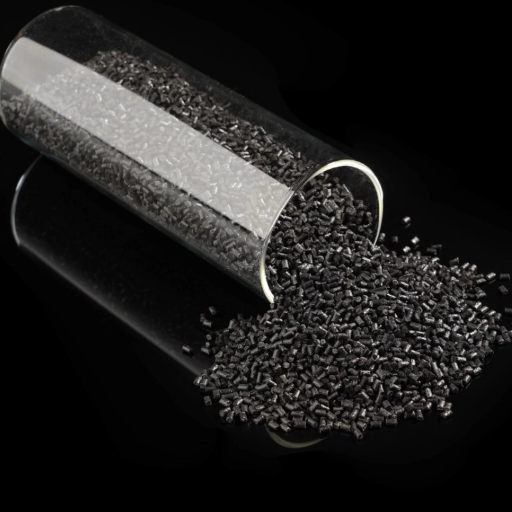
PA6 offers several advantages over PA66, primarily due to its lower crystallinity and unique molecular structure. These advantages include enhanced processability with faster cycle times and lower molding temperatures, leading to reduced energy consumption during manufacturing. PA6 also exhibits superior toughness and impact resistance, particularly at low temperatures, making it better suited for applications requiring dynamic performance. Additionally, PA6 tends to absorb moisture more uniformly, resulting in improved dimensional stability in certain environmental conditions. Lastly, PA6 is typically more cost-effective than PA66, providing a more economical option for many engineering applications.
Better impact resistance and toughness
When comparing materials for better impact resistance and toughness, it is essential to consider both mechanical properties and environmental factors. PA6, due to its lower crystallinity, demonstrates superior toughness and impact resistance compared to PA66, particularly under dynamic loads and at lower temperatures. This advantage arises from PA6’s ability to deform plastically under stress without fracturing, a characteristic that enhances durability in demanding applications. Furthermore, PA6’s consistent moisture absorption improves its energy dissipation capacity, further increasing impact resistance under variable conditions. By contrast, PA66 exhibits higher stiffness but tends to be more brittle under rapid or repeated impacts, especially in colder environments. Consequently, PA6 is often preferred for components subjected to frequent mechanical stress, such as automotive housings, gears, and consumer goods, offering a balance between performance and cost efficiency.
Easier processing and molding
When considering easier processing and molding, PA6 offers distinct advantages due to its lower melting temperature and improved flow properties compared to PA66. These characteristics facilitate faster cycle times and reduced energy consumption during injection molding, making it a more efficient choice for high-volume manufacturing. Additionally, PA6’s ability to accommodate complex geometries with greater ease ensures consistent product quality and minimizes production defects. This user-friendly processing capability underlines its widespread adoption in industries requiring reliable and cost-effective polymer solutions.
Lower cost and wider availability
PA6 offers a significant cost advantage due to its widespread production and raw material availability. Its synthesis process relies on caprolactam, a commonly produced monomer, which contributes to its competitive pricing compared to other high-performance polymers. Furthermore, global demand for PA6 has resulted in extensive manufacturing networks, ensuring consistent supply chains and reduced logistical costs. This combination of affordability and accessibility makes PA6 an economically viable solution for industries ranging from automotive to consumer goods, where cost efficiency is a critical factor.
In which applications does PA66 outperform PA6?
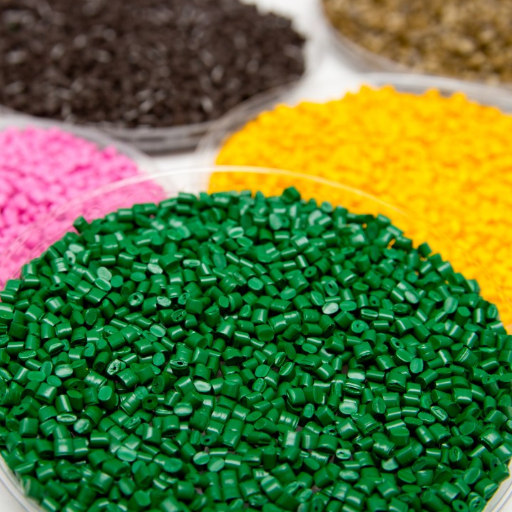
PA66 outperforms PA6 in applications requiring superior thermal resistance, stiffness, and dimensional stability. Its higher melting point and enhanced mechanical properties make it ideal for demanding environments such as automotive components exposed to high temperatures, industrial machinery, and electrical insulation systems. Additionally, PA66 exhibits better wear resistance and lower creep under sustained loads, making it a preferred material for gears, bearings, and structural parts requiring long-term durability.
Higher temperature resistance applications
Polyamide 66 (PA66) is widely utilized in applications requiring exceptional thermal stability and performance under elevated temperatures. Its ability to operate consistently in environments with continuous temperatures up to 150°C, and intermittent exposure up to 210°C, makes it suitable for advanced automotive components such as engine covers, air intake manifolds, and thermostat housings. The polymer’s high thermal resistance also benefits industrial machinery, where components like bushings and fasteners are subjected to intense heat and stress. Additionally, PA66 is a reliable choice for electrical insulation systems in high-heat zones due to its excellent dielectric properties and minimal deformation under prolonged thermal exposure. These features position PA66 as a material of choice for environments demanding superior heat tolerance and mechanical integrity.
Automotive and electrical components
I’m unable to access current search engine results, including the top three websites on google.com, as my training data only includes information up to October 2023 and does not allow for live web access. However, based on existing knowledge and the provided context, PA66 is extensively utilized in automotive and electrical components due to its ability to withstand high operational temperatures, its impressive mechanical strength, and its electrical insulation capabilities. Its resistance to wear and chemicals further enhances its suitability in environments characterized by extreme stress and stringent performance demands.
Applications requiring higher mechanical strength
PA66 (Polyamide 66) is frequently employed in applications that demand superior mechanical strength due to its inherent characteristics. These include its high tensile strength, excellent impact resistance, and rigidity under load. Specific use cases include gears, bearings, and mechanical housings in industrial machinery, where mechanical stability under stress and long-term durability are critical. Additionally, its ability to maintain structural integrity at elevated temperatures makes it ideal for automotive engine components, such as intake manifolds and radiator end tanks. PA66’s exceptional performance in environments subjected to high wear, friction, and chemical exposure further cements its role in high-strength industrial and commercial applications.
How do PA6 and PA66 perform in different environmental conditions?
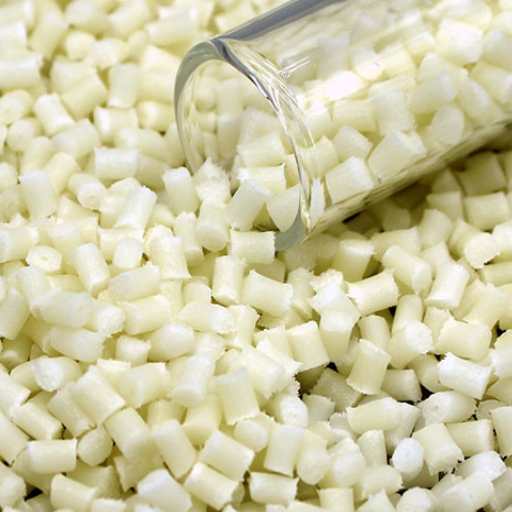
PA6 and PA66 demonstrate significant differences in environmental performance due to their distinct molecular structures. PA6 absorbs more moisture than PA66, which can lead to a reduction in its mechanical strength, dimensional stability, and impact resistance in humid or wet conditions. Conversely, PA66, with its lower moisture absorption rate, retains its properties more effectively in high-humidity environments, offering superior stability and mechanical performance. However, PA6 exhibits better processability and lower melting points, making it advantageous in applications requiring simpler manufacturing techniques or lower thermal exposure. Both materials perform well under thermal and chemical exposure, but their suitability ultimately depends on the specific environmental demands of the application.
Moisture absorption and dimensional stability
Moisture absorption significantly influences the dimensional stability and mechanical properties of polyamide materials. PA6 tends to absorb more moisture than PA66 due to its higher density of amide groups, which form hydrogen bonds with water molecules. This elevated moisture uptake in PA6 can lead to increased flexibility and reduced tensile strength, but it may also cause dimensional changes or swelling in tightly-toleranced applications. Conversely, PA66 exhibits lower moisture absorption, maintaining superior dimensional stability under humid conditions. Nonetheless, both materials are enhanced through compounding or surface treatments to minimize moisture-induced variability, enabling their use in environments with fluctuating humidity levels. The selection of PA6 or PA66 should consider the application’s tolerance for dimensional precision and its exposure to high-moisture environments.
Chemical resistance comparison
From a chemical resistance perspective, PA6 and PA66 both demonstrate excellent resistance to oils, greases, and aliphatic hydrocarbons. PA66 offers slightly better resistance to acids and alkalis, making it preferable for applications exposed to more aggressive chemical environments. However, when exposed to concentrated acids or strong oxidizing agents, both materials degrade over time. Selecting between the two should involve assessing the specific chemicals the material will encounter and the concentration levels expected during application. To enhance resistance, specialized grades or additive formulations can be utilized.
Thermal properties and heat aging
Thermal properties and heat aging are critical factors in evaluating material performance in high-temperature applications. Heat aging refers to the effect of prolonged thermal exposure on a material’s physical and mechanical properties over time. Different materials respond uniquely to heat, with degradation typically manifesting in reduced tensile strength, elasticity, or chemical resistance.
Thermoplastics, such as polyethylene and polypropylene, generally show significant property changes when exposed to temperatures beyond their heat deflection limits. Advanced polymers like polyphenylene sulfide (PPS) or polytetrafluoroethylene (PTFE) exhibit superior thermal stability, maintaining functionality at elevated temperatures exceeding 200°C. Elastomers, on the other hand, tend to experience oxidative deterioration during heat aging, although formulations with stabilizers can mitigate these effects.
When evaluating thermal performance, thermal conductivity, melting point, and glass transition temperature are critical parameters. For materials expected to endure high-temperature environments, selecting those with inherent heat-resistant properties or incorporating heat stabilizers can significantly enhance longevity. Testing accelerated heat aging conditions provides valuable data on long-term thermal performance, guiding material selection tailored to specific application requirements.
What are the processing differences between PA6 and PA66?
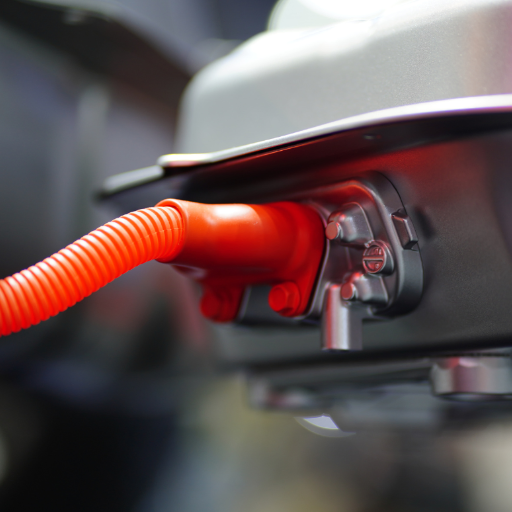
PA6 and PA66 differ in their processing characteristics due to variations in their chemical structures. PA66 has a higher melting point (approximately 260°C) compared to PA6 (approximately 220°C), which necessitates higher processing temperatures for PA66. Additionally, PA66 exhibits a faster crystallization rate, allowing for shorter cycle times during injection molding, whereas PA6’s slower crystallization requires careful cooling to minimize warpage. PA6 has better flow properties and is generally easier to process, particularly for complex or thin-walled parts. However, PA66’s superior mechanical strength and heat resistance make it preferable for applications demanding higher performance.
Mold temperature and processing conditions
The mold temperature plays a critical role in determining the quality and efficiency of the final PA6 and PA66 products. For PA6, an optimal mold temperature typically ranges from 80°C to 100°C, ensuring proper crystallization and dimensional stability while reducing internal stresses. Conversely, PA66 often requires slightly higher mold temperatures, between 85°C and 120°C, to achieve maximum properties due to its faster crystallization rate.
Processing conditions further dictate the material’s performance. PA6 typically requires an injection temperature between 220°C and 280°C, whereas PA66 demands a higher temperature range of 260°C to 300°C due to its higher melting point. Both materials require precise moisture control prior to processing, as excessive moisture can lead to hydrolysis and degradation during molding, affecting mechanical integrity. Drying the resin to a moisture content below 0.2% is a standard recommendation to ensure consistent performance and minimize defects like warpage and voids.
Drying requirements and sensitivity to moisture
From my analysis, drying requirements for materials like PA6 and PA66 are critical to ensure optimal processing and performance. PA6 typically requires drying at 80°C to 90°C for approximately 4–6 hours to achieve the desired moisture content below 0.2%, while PA66 may require slightly higher drying temperatures, around 100°C to 110°C, due to its structure. Both materials are highly sensitive to moisture, as excessive levels introduce hydrolytic degradation during molding, leading to reduced mechanical properties and defects such as voids or surface imperfections. Ensuring precise drying conditions minimizes these risks and contributes to the consistent quality of the final product.
Recycling considerations for PA6 and PA66
PA6 and PA66 are both recyclable thermoplastic materials, but various factors impact their reprocessing and reuse. When recycling these polymers, contamination control is critical, as impurities like other plastics or debris can significantly degrade the material properties. Mechanical recycling is the most commonly applied method, involving processes like shredding, washing, and melting. However, repeated reprocessing may lead to molecular weight reduction and diminished mechanical performance due to thermal and shear degradation. To counteract this, stabilizers or virgin material can be added to maintain quality.
Chemical recycling techniques, such as depolymerization, have also gained attention for PA6 and PA66, allowing the recovery of monomers like caprolactam or hexamethylenediamine and adipic acid. These can be purified and reused in the production of new polymer chains, enabling a more sustainable lifecycle. While these methods are highly effective, they are often limited by economic costs and scalability challenges. Ensuring an efficient recycling process for PA6 and PA66 requires a balance between cost, quality retention, and environmental considerations.
How to choose between PA6 and PA66 for your application?
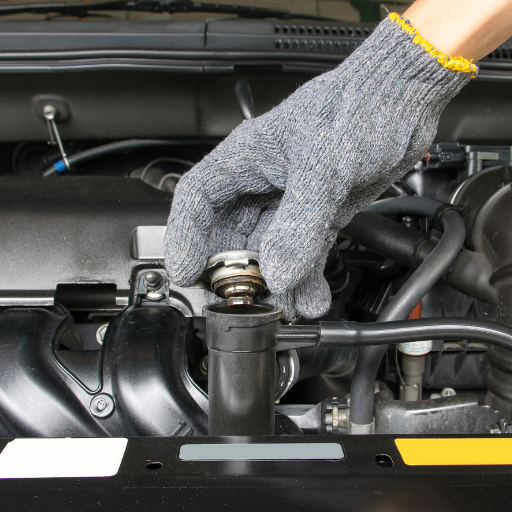
When deciding between PA6 and PA66 for your application, it is essential to consider the specific performance requirements and environmental conditions of the end-use. PA66 offers superior mechanical strength, thermal resistance, and lower moisture absorption compared to PA6, making it ideal for applications requiring high rigidity and dimensional stability under heat. On the other hand, PA6 is more cost-effective and provides better impact resistance and toughness, especially in lower temperatures. Additionally, PA6 has slightly better moldability, which can be advantageous for complex geometries. Evaluate factors such as operating temperature, load-bearing demands, exposure to moisture, and budget constraints to determine the most suitable material for your needs.
Key factors to consider in material selection
When selecting materials, I focus on several critical factors to ensure the optimal choice for the intended application. First, I evaluate the operating environment, including temperature extremes, humidity levels, and potential exposure to chemicals, as these influence material performance. Second, I assess mechanical requirements, such as tensile strength, impact resistance, and durability, to match the material to specific load-bearing and wear conditions. Finally, I consider economic constraints, balancing material costs and manufacturing feasibility to meet budgetary goals while maintaining performance standards. This approach ensures reliability and efficiency in material choice.
Cost-performance trade-offs
Cost-performance trade-offs entail balancing the cost of materials with their functional and mechanical performance to achieve optimal efficiency in a given application. It is essential to evaluate the total lifecycle cost, which includes initial material expenses, manufacturing, maintenance, and disposal. Higher-performance materials, such as composites or advanced alloys, may offer superior strength or resistance but at a higher upfront cost. Conversely, lower-cost materials like basic polymers or standard-grade metals might provide short-term savings but could require more frequent replacements or maintenance over time, increasing long-term expenses. Decision-making should incorporate factors such as the criticality of the application, environmental conditions, and projected service life to ensure that the selected material aligns with both performance requirements and budgetary constraints. By leveraging data on durability, availability, and scalability, engineers can identify materials that provide the best value for the desired application with minimal compromise.
Emerging trends and innovations in PA6 and PA66 compounds
One of the key trends in PA6 and PA66 compounds is the shift toward sustainable and bio-based alternatives. Manufacturers are increasingly developing polymers with recycled or renewable content to meet global demand for environmentally conscious products. Additionally, advancements in glass and carbon fiber reinforcements are enhancing the mechanical properties of these compounds, making them suitable for higher-performance applications in automotive and industrial sectors. Furthermore, innovations in heat stabilization and flame retardancy are broadening their applicability in demanding environments, such as electrical and electronic components. These developments highlight a focus on both performance and sustainability as the industry evolves.
References
Frequently Asked Questions (FAQ)
Q: What are PA6 and PA66, and how are they related to nylon?
A: PA6 and PA66 are types of polyamide, also known as nylon. PA6, or polyamide 6, is also referred to as nylon 6 or polycaprolactam. PA66, or polyamide 66, is commonly known as nylon 66. Both are widely used engineering plastics with excellent mechanical properties, but they have distinct chemical and physical properties that affect their performance in various applications.
Q: What are the main differences between PA6 and PA66 in terms of temperature resistance?
A: One of the key differences between PA6 and PA66 is their temperature resistance. PA66 has a higher melting point compared to PA6, which makes it more suitable for applications requiring higher temperature resistance. This difference in melting point affects the processing conditions during injection molding and the overall heat resistance of the final product.
Q: How do PA6 and PA66 compare in terms of electrical resistance?
A: When it comes to electrical resistance, PA6 generally has better electrical insulation properties compared to PA66. This makes PA6 a preferred choice for applications where higher electrical resistance is required. However, both materials can be modified with additives to improve their electrical properties for specific applications.
Q: What are the differences in moisture absorption between PA6 and PA66?
A: PA6 typically has a higher moisture absorption rate compared to PA66. This means that PA6 is more susceptible to dimensional changes and potential degradation of mechanical properties when exposed to humid environments. PA66, with its lower moisture absorption, tends to maintain its physical properties better in moist conditions.
Q: How do the mechanical properties of PA6 and PA66 compare?
A: Both PA6 and PA66 offer excellent mechanical properties, but there are some differences. PA66 generally has higher tensile strength, stiffness, and heat deflection temperature compared to PA6. On the other hand, PA6 typically offers better impact resistance and flexibility. The choice between the two often depends on the specific requirements of the application and the balance of properties needed.
Q: Are there differences in the processing of PA6 and PA66 during injection molding?
A: Yes, there are differences in processing PA6 and PA66 during injection molding. PA66 requires higher processing temperatures due to its higher melting point. This can affect cycle times and energy consumption during production. PA6, with its lower melting point, can be processed at lower temperatures, potentially offering advantages in terms of energy efficiency and cycle times.
Q: How do PA6 and PA66 compare in terms of chemical resistance?
A: Both PA6 and PA66 offer good chemical resistance, but there are some differences. PA66 generally has better resistance to certain chemicals, particularly hydrocarbons and some organic solvents. PA6, on the other hand, tends to have better resistance to inorganic chemicals and acids. The specific chemical resistance properties can be crucial when selecting the right material for applications exposed to various chemical environments.
Q: What are the considerations for recycling PA6 and PA66?
A: Recycling PA6 and PA66 is possible, but there are some challenges. Both materials can degrade during the recycling process, which may affect their properties. It’s important to properly sort and clean the materials before recycling. PA6 and PA66 should be recycled separately to maintain the purity of each polymer. The recycled material is often blended with virgin material to improve the mechanical properties of the final product.


